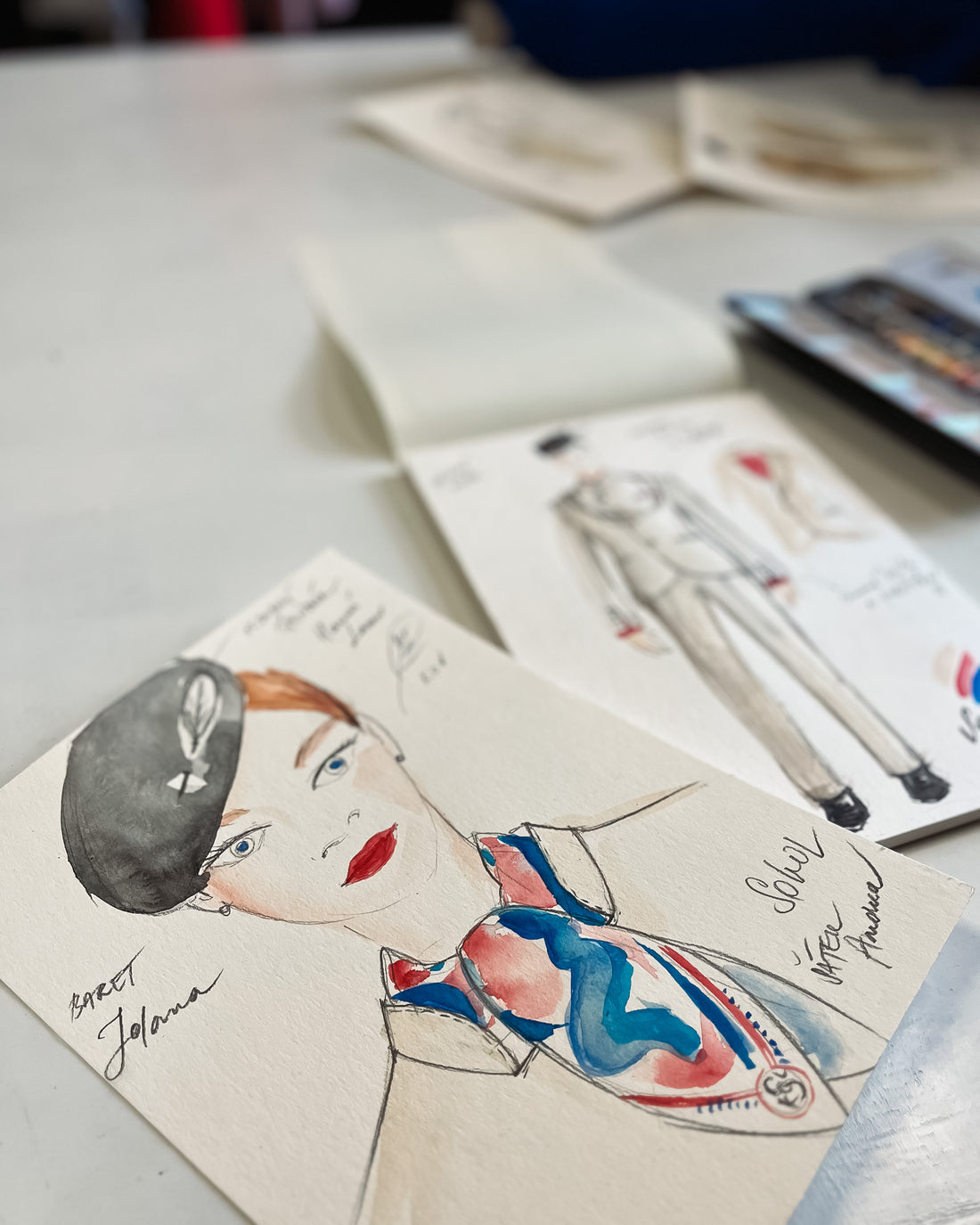
Designing the New Sokol Attire — Tradition Reimagined for the 21st Century
Share
The New Sokol Attire — Tradition Reimagined for the 21st Century
From elegance to symbolism, the new formal uniform of the Czech Sokol Movement (ČOS) stands as a tribute to national identity, refined craftsmanship, and timeless design. Created by designer Štěpánka Pivcová, the collection captures the essence of Sokol — a historic organization rooted in strength, unity, and cultural pride — while reflecting the aesthetics and needs of the modern age.
The history of Sokol attire dates back to 1862, when the first designs were created by renowned Czech artist Josef Mánes at the request of Jindřich Fügner. Over the years, the uniform evolved under artists such as František Ženíšek, mirroring the social and cultural changes of the nation. While men’s attire followed gradual evolution, women’s designs reflected the rhythm of fashion, balancing elegance and tradition.
The idea of a new Sokol formal collection emerged in 2022 — symbolically marking the 200th anniversary of Fügner’s birth. The goal was to create a timeless design that embodied the dignity and self-confidence of the movement, blending traditional motifs with contemporary tailoring.
“It was about merging heritage and modernity — to represent the Sokol community with pride, beauty, and relevance,” says designer Štěpánka Pivcová, whose work spans luxury fashion and cultural collaborations.
Design and Inspiration
The collection reflects harmony between men’s and women’s silhouettes, emphasizing unity. The men’s suit draws from historic Sokol uniforms — reinterpreting the stand-up collar, bold front fastening, and symbolic colors. Innovative tailoring allows the collar to transform seamlessly into a classic lapel, offering versatility and modern wearability.
“I wanted the new uniform to speak both of tradition and innovation — to let wearers express identity with freedom,” explains Pivcová.
Women’s designs reinterpret these details with a sense of fluid strength and understated grace. The suit and dress feature subtle shaping, soft waistlines adjustable by a fabric belt with a custom ČOS emblem clasp, created in collaboration with designer Martin Žampach using 3D modeling.
Blouses made of Tencel bring lightness and movement, while wool-based Italian fabrics ensure structure and durability. “Unfortunately, most Czech textile factories capable of this level of quality have disappeared,” Pivcová notes. “I chose Italian mills for their craftsmanship, but all sewing and final production are done in the Czech Republic and Slovakia — by skilled hands who carry our local legacy.”
Craft, Collaboration, and Detail
Every element of the collection pays homage to Czech artistry.
-
The Sokol feather brooch was created by jeweler Hanuš Lamr, known for his nature-inspired designs worn by figures such as Madeleine Albright and First Lady Eva Pavlová.
-
The silk scarf was designed by Andrea Vytlačilová, who infused its graphic pattern with Sokol symbolism — the movement’s emblem, the arches of Tyrš’s House, and rhythmic dots representing the unity of gymnasts.
-
The elegant beret was handcrafted by milliner Jolana Kotábová, whose designs have appeared at events from Royal Ascot to the coronation of King Charles III.
A Dialogue Between Heritage and Modernity
The creation process was extensive and deeply collaborative — from sketching and historical research to prototype fittings and material testing. “It was an alchemy of creativity, experience, and discipline,” says Pivcová. “We shaped every line until it felt right — until the garments carried both tradition and beauty.”
The result is a complete, living collection — not just clothing, but a statement of continuity and pride.
Produced locally, inspired globally, and rooted in Czech craftsmanship, the new Sokol attire bridges the spirit of the past with the elegance of the present.
“This collection is more than a uniform,” concludes Pivcová. “It is a celebration of identity, unity, and the artistry that defines who we are.”
